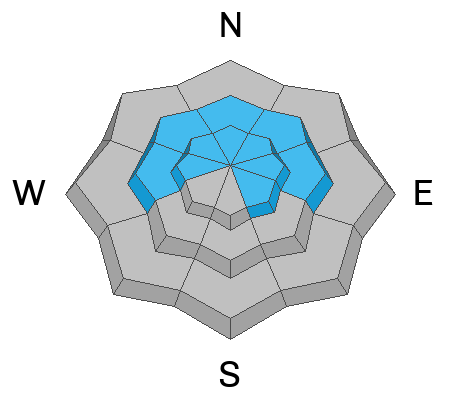The Wasatch Backcountry Alliance has released a Public Notice regarding access to Grizzly Gulch in upper Little Cottonwood Canyon. Please give it a quick read
HERE. Yesterday afternoon, winds veered from the southwest, worked their way clockwise, and now blow from the northwest. This morning, wind speeds picked up a bit and now blow 10-15 mph, gusting into the 20s across most ridgelines. Higher up at 11,000', the winds blow from the northwest at 20-30 mph. Under clear skies, mountain temperatures range from 19 °F in the valley bottoms and 33°F at Mid Mountain (7,500')
Another day of high pressure is on tap with plenty of sunshine and the occasional passing cloud. The temperature will climb into low to mid 40 °F. Winds will remain from the northwest at similar speeds as above. Fingers crossed that we get a couple of inches of snow this coming week. Our weather looks bleak until maybe after Christmas.
The Diurnal cycle (day to night) is taking it's toll on our snow surface. Temperature changes and the energy balance of incoming shortwave radiation and longwave outward radiation are causing our adolescent snowpack to deteriorate, becoming weaker and weaker and more faceted every day. The good news is the riding and turning conditions are pretty good. The bad news is we are developing a nasty weak layer that will haunt us in the future.









